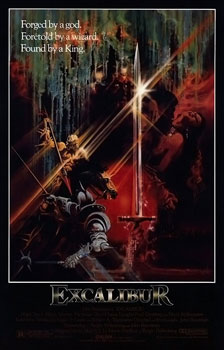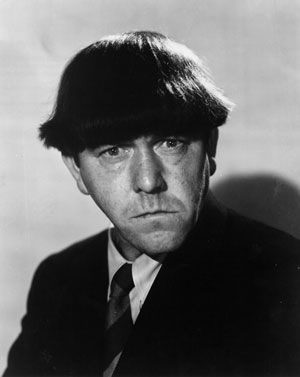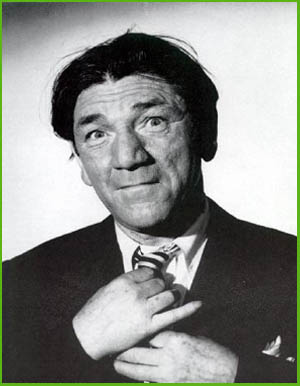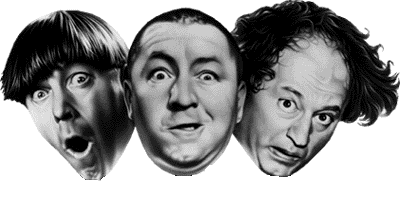While Twitter, Whrrl, and Facebook are my go-to-tools in online sharing, their limitations can stunt my stream-of-consciousness on a subject. So I’m taking ideas that come from other discussions and networks, bringing them here, and expanding on them.
Also, I too am annoyed when people post a waxing philosophic dissertation as a Facebook status. No, I’m not going to become “that guy†on the Social Networks.
This blogpost was inspired from a Twitter exchange I enjoyed with one of the sweetest ladies of Social Media, Vivid Muse. Viv was easing into her day, and fired off this tweet across my starboard bow:
VividMuse: Also, Three Stooges are even dumber than I remember. It would be interesting to try and classify all men as Larry, Curly or Moe. Possible?
My reply:
I think there’s a little bit of 3 Stooges in all men. (Heck, @PhilippaJane saw my “Curly” on the JMU football field last month.)
This reminded me of my own personal observation of The Three Stooges and why us men-folk are so curiously drawn to them like moths to a bonfire. What is it about those three guys?
It should be noted while their humor is crude, base, and just plain absurd, the Three Stooges never went for the gross joke ala modern slapstick offerings like Opie & Anthony, the Jackass crew, or Tom Green. The latter I would describe as the “torture pr0n†of comedy. Yes, the Stooges did cause mayhem and chaos wherever they were but it never crossed the extreme end of tolerance. Even the Stooges knew their limits.
This brought me to a possibility that the Three Stooges held a deeper meaning to us men, that perhaps there was — at the core of this slap-riddled humor — a sophistication that has made them sacred.
Yes, sacred. Men can disagree on football versus rugby, Batman versus Superman, and Captain Kirk versus Captain Picard; but ask any man and they will tell you without question that the Three Stooges stopped being The Three Stooges after 1955 (following the death of Shemp Howard).
End of (that) discussion.
 So what exactly is the hidden symbolism of The Three Stooges? To understand it, you have to go back to the iconic imagery of King Arthur’s fall.
So what exactly is the hidden symbolism of The Three Stooges? To understand it, you have to go back to the iconic imagery of King Arthur’s fall.
Yes, I am drawing a parallel between The Three Stooges and Le Morte d’Arthur. Roll with me here…
Depending on which legend you track with, Arthur after his climactic battle with Mordred is seen on a boat with three women (again depending on which legend you track with, presumably are Igrayne, Guinevere, and Morgana) watching over his final journey to Avalon. The symbolism of the three women is usually attributed to the Maid, the Mother, and the Crone, or three stages of a woman’s life: childhood, motherhood, and sage adviser. The “power of three†is rife through classic literature and modern storytelling, from the witches of MacBeth to the Halliwell sisters in Charmed.
So it goes for guys and The Three Stooges. Break down the slapstick comedy trio and you can really see the symbolism. The Three Stooges embody three stages of Man, or at least what men strive to be and why we are constantly at odds with ourselves.
 Moe Howard
Moe Howard
Moe embodies Control. When the Stooges find themselves in a pickle, who calls the shots? Do we look to Larry for the answers or Curly for the leadership? Hell no, all eyes turn to Moe. He’s the man with the plan. Not always a good plan, but a plan’s a plan. Men, on an average, love to think they have a magic plan that will fix everything. Sometimes, a plan is paramount to brilliance. More often than we like to admit, a plan will end with a pie fight, cops showing up, and its masterminds running into the sunset at double speed. Still, Moe is the Control that men feel must be applied to every situation, be it a crisis or a social situation.
 Larry Fine
Larry Fine
Larry is the Follower. Yes, men like to take charge. Yes, men like to have the final say. Men also like to hear those above us say “Good work.†or “Well done.†We feel a sense of accomplishment when, as part of a team, victory is earned or problems become solved. As Followers, men still find themselves serving as the Control, but shouldering less of the responsibility. Larry is the first person Moe turns to in order to get things done. And why not? He practices a strong work ethic (Do what Moe tell me to…) coupled with an even stronger motivation (…and he won’t slap me!), making Larry trustworthy and reliable, traits men strive for.
Curly Howard
 Then there is Curly. Men want to be him. Women want to tame him. Why? For his physique? (Body by donuts.) For his command of the English language? (Nyuck-nyuck-nyuck.) No, it’s the man’s approach to life: Curly represents Wild Abandon. If we are led to believe the “Girls Gone Wild†video extravaganzas, the role of Wild Abandon is reserved for women only; but wasn’t it John Belushi that called forth the spontaneous “Gator†dance move in Animal House? And wasn’t it Steve Martin that called himself a “wild and crazy guy†to the delight of millions worldwide? And was it not “Weird Al†Yankiovic that fearlessly repurposed pop hits under titles like “Eat It†and “White and Nerdy†to conquer the music charts? These and other “Devil May Care†transgressions can be traced back to Curly. In my recent return to James Madison University, I paid homage to Man’s personification of Wild Abandon by dropping to the ground and spinning on my shoulder. (See my earlier-quoted tweet.) In that moment I won the hearts of the JMU student body, the admiration of my fellow alumni, and the embarrassment of Philippa Ballantine. Curly was always my favorite when growing up, but it was later in life I understood why. Why women always went to Curly first. Why Curly, unleashed, became a juggernaut of Wagnerian proportions. Why Curly, of all the Stooges, is the most cited, most quoted, and most revered of the Stooges. Curly resides where we dare not go. He is that recklessness we feel in our youth and struggle to hold on to in our later years.
Then there is Curly. Men want to be him. Women want to tame him. Why? For his physique? (Body by donuts.) For his command of the English language? (Nyuck-nyuck-nyuck.) No, it’s the man’s approach to life: Curly represents Wild Abandon. If we are led to believe the “Girls Gone Wild†video extravaganzas, the role of Wild Abandon is reserved for women only; but wasn’t it John Belushi that called forth the spontaneous “Gator†dance move in Animal House? And wasn’t it Steve Martin that called himself a “wild and crazy guy†to the delight of millions worldwide? And was it not “Weird Al†Yankiovic that fearlessly repurposed pop hits under titles like “Eat It†and “White and Nerdy†to conquer the music charts? These and other “Devil May Care†transgressions can be traced back to Curly. In my recent return to James Madison University, I paid homage to Man’s personification of Wild Abandon by dropping to the ground and spinning on my shoulder. (See my earlier-quoted tweet.) In that moment I won the hearts of the JMU student body, the admiration of my fellow alumni, and the embarrassment of Philippa Ballantine. Curly was always my favorite when growing up, but it was later in life I understood why. Why women always went to Curly first. Why Curly, unleashed, became a juggernaut of Wagnerian proportions. Why Curly, of all the Stooges, is the most cited, most quoted, and most revered of the Stooges. Curly resides where we dare not go. He is that recklessness we feel in our youth and struggle to hold on to in our later years.
 Shemp Howard
Shemp Howard
I would be remiss if I did not include Shemp, the original third man. Shemp managed, while not evident at first, to embody the stage of Man that balances out his predecessor.  Shemp stands for the Consequences of Our Actions. While Curly stands for Wild Abandon, it is Shemp that shows us what happens the day after that leap into the unknown. If there was something needing to be tasted, tested, or tried before the other Stooges proceeded with their master plan, Shemp was usually (yanked) first in line to “see what happens when…†followed by the wheezing, the stammering, and the perfectly-quaffed hair falling as a final curtain into Shemp’s face and blinding the poor man. Shemp — the perpetual lab rat that he was — would step up and serve as a powerful lesson to the responsibilities of what we do, be they voluntary or not. He would also serve as an example of bearing the fallout responsibly, be that fallout voluntary or not.
What you may see on the outside of their vintage comedy shorts and feature films is cream pie battles, early attempts at waterboarding (with fire hoses), and pratfalls testing the mettle of mortals; but underneath the slapstick runs a subtle symbolism of what Men strive for, what we need to be, and why we are what we are. The deeper meaning in the bond shared between Moe, Larry, Curly, and Shemp is ever present in their performances; and once you look past the gags, the slaps, and the eyepokes, you get a sense of why Men are so passionate about their Stooges. They are the building blocks that — together — complete the composition of the male species. This is the reason why, ladies, the same guy who buys you flowers for no reason and surprises you with a day-long trip to a spa is the same guy who refuses to put the toilet seat down and remarks “Damn, she’s hot!†whenever you’re watching True Blood or Burn Notice together. We are complex machines; and to understand how the machine works, you need not look any further than the (pre-1955) works of The Three Stooges.
This is the Power of Three, manning up.
